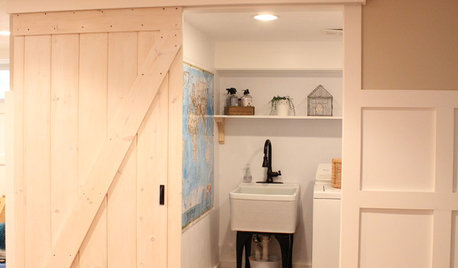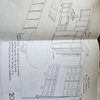Anyone make a cathedral ceiling out of a reg. ceiling?
moegaff
16 years ago
Featured Answer
Sort by:Oldest
Comments (27)
User
16 years agosierraeast
16 years agoRelated Professionals
Newington Kitchen & Bathroom Designers · Terrell Kitchen & Bathroom Remodelers · Washington Interior Designers & Decorators · Alhambra General Contractors · Bon Air General Contractors · De Luz General Contractors · Fairview General Contractors · Fredonia General Contractors · Fort Pierce General Contractors · Greenville General Contractors · Groton General Contractors · Hayward General Contractors · Millville General Contractors · Parkville General Contractors · Austintown General Contractorsjakkom
16 years agosierraeast
16 years agoarielitas_mom
16 years agowestern_pa_luann
16 years agoremodeler_matt
16 years agomi_hawkeye
16 years agoremodeler_matt
16 years agohurrijane
16 years agonotnacla
16 years agoremodeler08
16 years agomoegaff
16 years agomightyanvil
16 years agobill_g_web
16 years agoremodeler08
16 years agoCharlyv
11 years agoCharlyv
11 years agorenovator8
11 years agovirgilcarter
11 years agorenovator8
11 years agopropertyfarmer
10 years agorenovator8
10 years agosoutherncanuck
10 years agoPMH Architecture
6 years agolast modified: 6 years agoUser
6 years agolast modified: 6 years ago
Related Stories

LAUNDRY ROOMSThe Cure for Houzz Envy: Laundry Room Touches Anyone Can Do
Make fluffing and folding more enjoyable by borrowing these ideas from beautifully designed laundry rooms
Full Story
DECORATING GUIDESThe Cure for Houzz Envy: Guest Room Touches Anyone Can Do
Make overnight guests feel comfy and cozy with small, inexpensive niceties
Full Story
BEDROOMSThe Cure for Houzz Envy: Master Bedroom Touches Anyone Can Do
Make your bedroom a serene dream with easy moves that won’t give your bank account nightmares
Full Story
MUDROOMSThe Cure for Houzz Envy: Mudroom Touches Anyone Can Do
Make a utilitarian mudroom snazzier and better organized with these cheap and easy ideas
Full Story
BUDGET DECORATINGThe Cure for Houzz Envy: Entryway Touches Anyone Can Do
Make a smashing first impression with just one or two affordable design moves
Full Story
HOME OFFICESThe Cure for Houzz Envy: Home Office Touches Anyone Can Do
Borrow these modest design moves to make your workspace more inviting, organized and personal
Full Story
CLOSETSThe Cure for Houzz Envy: Closet Touches Anyone Can Do
These easy and inexpensive moves for more space and better organization are right in fashion
Full Story
DIY PROJECTSMake Your Own Barn-Style Door — in Any Size You Need
Low ceilings or odd-size doorways are no problem when you fashion a barn door from exterior siding and a closet track
Full Story
KITCHEN DESIGNThe Cure for Houzz Envy: Kitchen Touches Anyone Can Do
Take your kitchen up a notch even if it will never reach top-of-the-line, with these cheap and easy decorating ideas
Full Story
BUDGET DECORATINGThe Cure for Houzz Envy: Living Room Touches Anyone Can Do
Spiff up your living room with very little effort or expense, using ideas borrowed from covetable ones
Full Story









renovator8